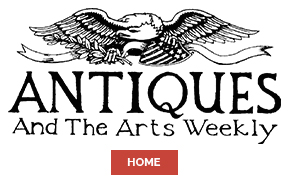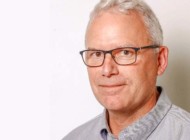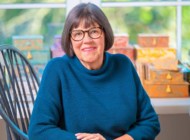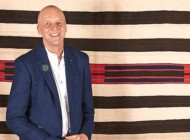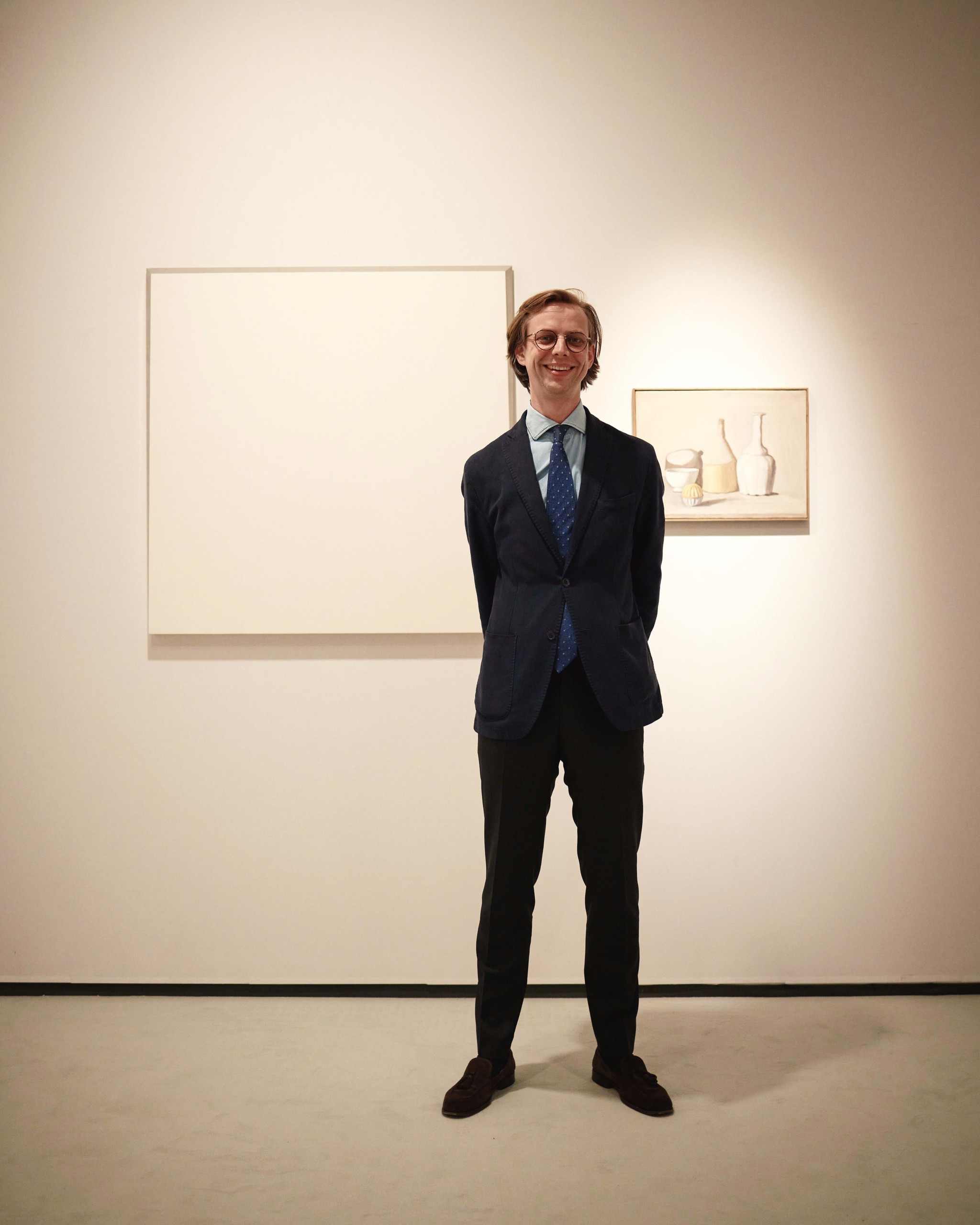
William Jess Laird photo, courtesy of TEFAF.
Paul van den Biesen joined The European Fine Art Foundation (TEFAF) in March of 2020, just 10 days before the Maastricht edition was interrupted by the pandemic. In the five years since then, he has put his experience at both Sotheby’s and Christie’s, and the Rembrandt Association, to good use, helping guide TEFAF through virtual initiatives to the return of in-person fairs. Having heard him speak in New York City in early May on a panel about the future of collecting, I thought our readers would appreciate hearing about what he — and TEFAF — are doing to strengthen existing relationships, or develop new ones, with collectors.
What does the role of Head of Collectors & Museums entail?
My department focuses on attracting and engaging TEFAF’s most important visitors — collectors, museum curators, interior designers and art advisors — while also reaching out to new audiences. I especially enjoy creating programs that welcome emerging collectors and support the next generation of museum professionals.
Alongside this, my team and I oversee TEFAF’s charitable initiatives, including the TEFAF Museum Restoration Fund, Cultural Emergency Response and our long-standing relationship with The Society of Memorial Sloan Kettering. I also work closely with our partnerships team on key relationships, including our Global Lead Partner AXA XL and Lead Partner TEFAF New York Bank of America Private Bank.
In addition, we organize the museum exhibitions at TEFAF Maastricht; I’m also part of TEFAF’s management team and serve as the main contact for our Global Advisory Board, which includes prominent collectors such as Marina Kellen French and influential museum leaders like Max Hollein of the Met. Never a dull moment — and that’s exactly how I like it.
I had the pleasure of hearing you talk recently about “Building the Future of Collecting,” a key topic that I know is — or should be — a focus at TEFAF and other fairs. Have you seen a renewed interest in this recently or do you sense particular urgency these days?
Absolutely — there’s a definite sense of momentum and curiosity in the air, especially among new collectors. One fascinating trend we’ve observed is that many are starting with contemporary art — works by living artists — before gradually becoming curious about earlier periods. It’s almost the reverse of the path taken by iconic collectors like J. Paul Getty or Henry Clay Frick, who began with ancient art and only later embraced the modern.
We see — similar to many other sectors — that the current generation of collectors is aging, and many key figures are stepping back and will disappear from the scene at some point. There is a real urgency to engage and cultivate the next generation of collectors through education and long-term relationship-building. There are many art buyers today, but what the market — and cultural heritage as a whole — truly needs are connoisseur collectors: individuals with deep curiosity and commitment, who will carry forward expertise, care for collections and ensure that this knowledge is handed down to future generations.
That’s where TEFAF comes into its own. With over 350 world-class galleries across our fairs and more than 7,000 years of art history on view — from ancient artifacts to contemporary art and design — we offer more than just extraordinary works of art. We offer context, scholarship and conversations.
You’ve developed the strategic initiatives as the TEFAF Emerging Collectors Program and the TEFAF Curator Course — can you tell our readers a little more about those?
With pleasure — both initiatives are close to my heart! The TEFAF Emerging Collectors Program is all about welcoming a new generation into the world of collecting. Our galleries and partners invite young professionals and first-time buyers from a wide range of industries — finance, fashion, tech — or the children of their current clients — who all have a sincere interest in art but may not yet feel entirely at home navigating the art world. Through a tailored program, curated with the help of our galleries, we offer fair visits with a digital guide providing artwork information selected for this target group, small group conversations with experts and exclusive events hosted by our annual tastemakers. Think fashion icon Margherita Missoni at TEFAF New York or interior designer Remy Renzullo at TEFAF Maastricht, who gave their personal insights on selected artworks at the fairs this year. These encounters help open doors, break the ice and demystify collecting, such as providing prices of artworks to create transparency. And it’s working: many of our participants have become active buyers and enthusiastic advocates for the arts. Personally, I hope to help nurture some of these individuals into true connoisseur collectors — passionate custodians of culture who care for artworks not just as possessions, but as part of a larger cultural legacy, preserving them for future generations or even their eventual place in a museum.
On the other side of the spectrum is the TEFAF Curator Course, designed to support early- to mid-career museum professionals as they engage more confidently with the art market. I noticed that many emerging curators are so focused on exhibitions, publications and conservation, that acquisitions — essential to keeping collections alive — often fall by the wayside. So, in partnership with Maastricht University, we bring 10 curators from around the world, selected after application, to TEFAF Maastricht for a week-long crash course in the market side of art. They meet with galleries, collectors and fellow curators, gaining insight into acquisition strategy and market context.
Both initiatives are rooted in the belief that the future of the art world depends on sharing knowledge, education, and meaningful relationships — and TEFAF is proud to be building those bridges.
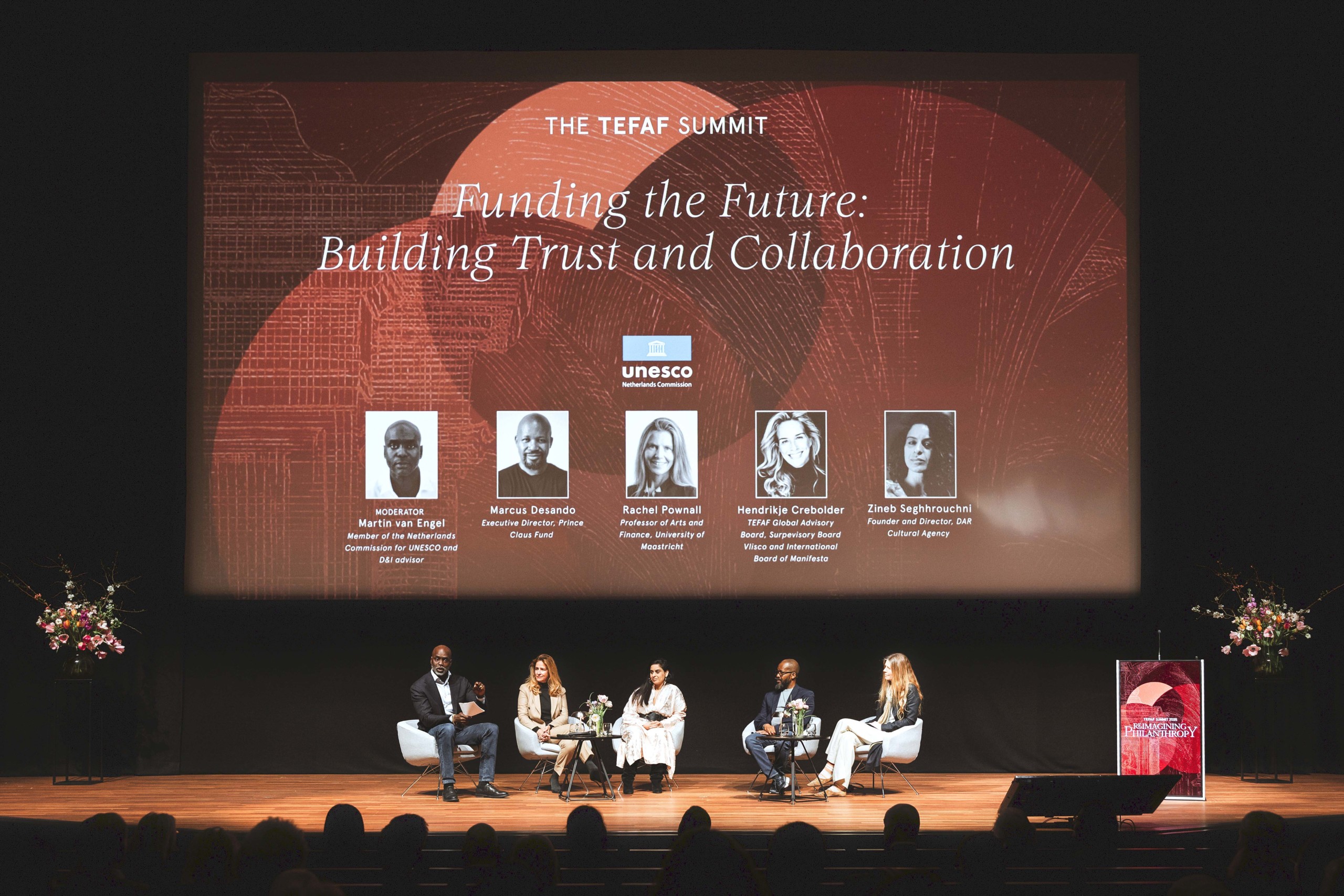
TEFAF Summit, TEFAF Maastricht 2025, Maison Rowena photo, courtesy of TEFAF.
What are the challenges a fair like TEFAF faces that might be unique among other fairs?
TEFAF is quite different from most other art fairs, and that comes with both great strengths and some challenges. One key distinction is that we’re a not-for-profit foundation, which gives us a strong sense of purpose but also makes us more careful with how we invest in new initiatives. Unlike some commercial fairs that can take bold risks — especially in areas like digital innovation — our decisions go through a series of thoughtful discussions and approvals with our boards. This often means progress is more deliberate, but it ensures everything we do is rooted in long-term value and mission.
Another challenge — and one of our greatest assets — is vetting. TEFAF has the most rigorous vetting process in the art fair world, with over 250 independent experts, conservators and scholars reviewing every artwork for quality, authenticity and condition. It’s a massive undertaking that gives our visitors and buyers an exceptional level of trust, but it also means we can only start promoting individual artworks very close to the fair, once the vetting process is complete. On the flip side, this adds to the thrill: you come to TEFAF to be surprised, to make discoveries and to experience true connoisseurship.
We’re also known as the fair for museum-quality masterpieces, which is both a badge of honor and, occasionally, a barrier. Let’s face it; if you hear that Rembrandts and Van Goghs are on offer (and yes, we’ve had 11 paintings by Rembrandt at TEFAF Maastricht in the past two decades!), it might feel intimidating for a first-time buyer. That’s exactly why we’ve developed programs like the Emerging Collectors Program — to offer guidance and highlight accessible entry points for starting a collection. Because while TEFAF is indeed a place to find icons of art history, it’s also a place to begin your own collecting journey with confidence and curiosity. It still amazes me that at TEFAF, you can also acquire beautifully crafted blue faience figures from ancient Egypt — over 2,500 years old — for under $2,000.
TEFAF Maastricht encompasses several millennia of cultural heritage while the New York edition is more narrowly focused on Twentieth Century art and objects. Is there a noticeable difference in audience between the two? Does your strategy or approach towards developing lasting relationships with collectors and museums differ between the two fairs?
Absolutely — each fair has its own character, rhythm and audience, and we tailor our approach accordingly. TEFAF Maastricht is truly epic in scale and scope. With over 270 of the world’s leading galleries and art dealers, it spans nearly five soccer fields in size and offers a journey through 7,000 years of art history, ranging from ancient civilizations to cutting-edge design. It attracts a deeply engaged audience: seasoned collectors, top museum professionals, connoisseurs and scholars who come to Maastricht for the quality, depth and sheer range. Our strategy there is long-term and relationship-driven, often involving curatorial collaborations, scholarly talks and initiatives like the TEFAF Curator Course. Many visitors return year after year — it’s a community rooted in connoisseurship and cultural stewardship.
TEFAF New York, by contrast, is more compact with around 90 exhibitors, focused and fast-paced. Held at the iconic Park Avenue Armory, in one of Manhattan’s most prestigious postcodes, the fair coincides with the most important week of the New York art calendar — when all the major modern and contemporary auctions, top museum exhibitions and other fairs are in full swing. In other words: everyone is in town. The audience here is energetic and diverse, including younger collectors, creatives and cultural influencers. It’s a moment to connect with a vibrant, contemporary crowd through more intimate, curated experiences, like design-led tours and social events hosted by our tastemakers.
That said, whether in Maastricht or Manhattan, our mission remains the same: to foster meaningful connections between collectors, institutions and the world-class art presented by our galleries.
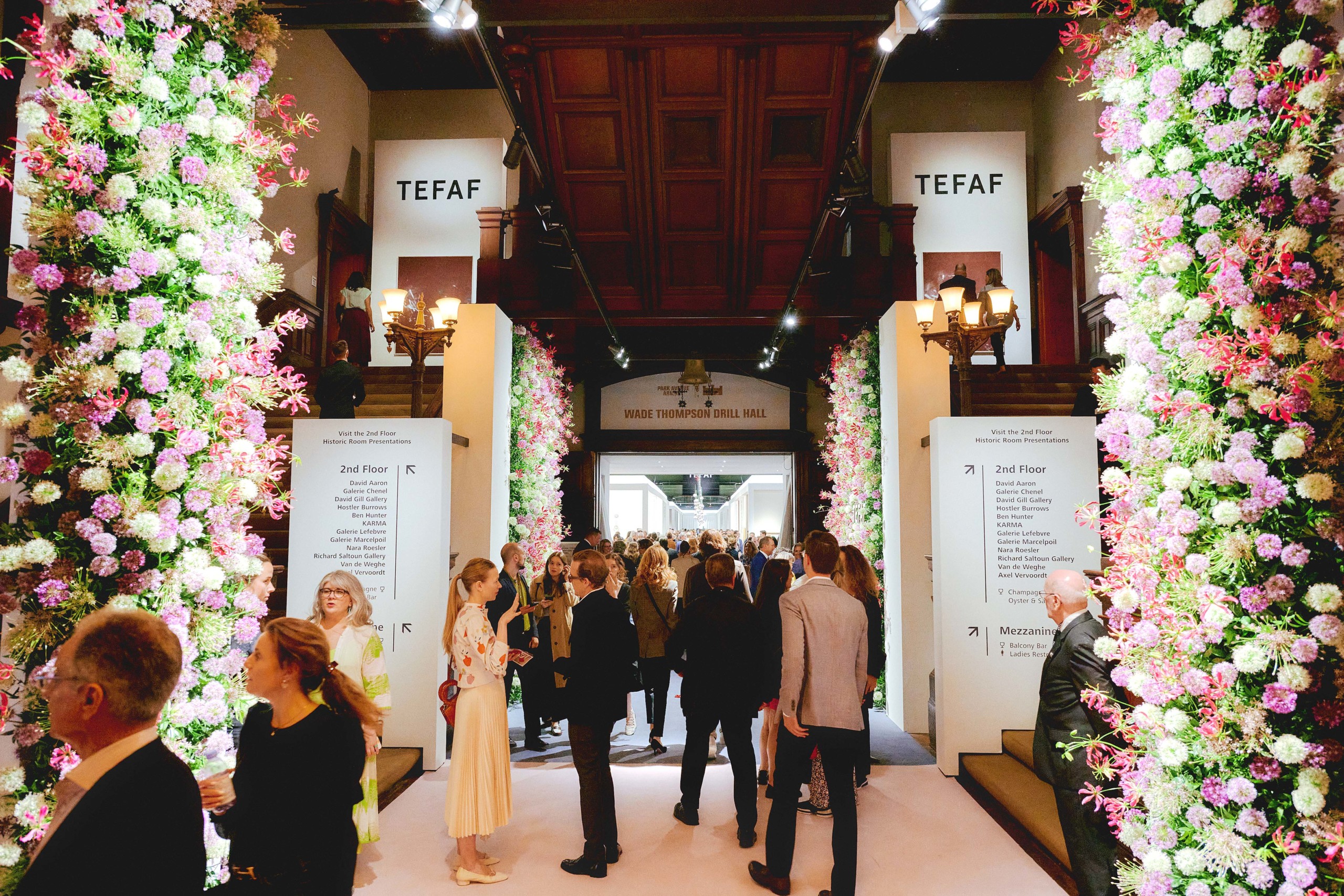
Entrance interior to the TEFAF New York fair. Vincent Tullo photo, courtesy of TEFAF.
What other initiatives has TEFAF taken toward not only engaging with new audiences but in cultivating those audiences?
One post-pandemic initiative I’m especially proud of is the development of TEFAF Programming, which includes TEFAF Talks and TEFAF Meet the Experts.
TEFAF Talks bring together collectors, curators, scholars, creatives and cultural thinkers for in-depth conversations on everything from collecting practices and conservation to contemporary issues shaping the art world. A recent highlight was at TEFAF Maastricht, where we welcomed the brilliant Edmund de Waal. His reflections on memory, materiality and the emotional lives of objects captivated a packed room.
Meanwhile in New York, J. Tomilson Hill — one of the greatest collectors of our time — and his daughter Astrid Hill, spoke candidly about the dynamics of multigenerational art collecting, examining how the Hill family’s passion for art is passed down and how this influences the collection. Their enthusiasm and storytelling gave the audience a real sense of the joy behind collecting, which is exactly the kind of energy we want to pass on to new audiences. All TEFAF Talks are free to attend with your fair admission ticket, and recordings of past sessions are available to watch anytime on our website, TEFAF.com.
TEFAF Meet the Experts is a more intimate, booth-side program where dealers, who are experts in their fields, present specific artworks, sharing fascinating stories and scholarly insights. I personally moderate several of these sessions, and I truly enjoy creating engagement and interaction between the gallerist and the audience. My goal is to lower the threshold — to make it easier for visitors to approach dealers, ask questions and build confidence.
I always try to encourage questions from the audience during these sessions, but one thing that never fails to surprise me is how hesitant people are to ask about price — even after a full discussion about an artwork’s provenance, condition and historical context. That’s become my favorite part: I end the session by asking the audience to guess the value. The reactions are priceless — often, they’re shocked to learn that something they assumed was far beyond reach is actually possible to acquire. That moment of realization is exactly what we aim for: it opens the door, breaks down barriers and plants the seed of collecting.
Together, these programs make TEFAF more than just a marketplace — they make it a place of discovery, conversation and access. They’re core to our mission of cultivating a new generation of collectors, and it’s a joy to see them work in real time.
While I’m mostly involved from the sidelines, I’m incredibly proud to support my colleagues on the Programming team, who launched the TEFAF Summit in Maastricht two years ago. Created in collaboration with the Netherlands Commission for UNESCO and partners like ICOM Belgium Flanders, and supported by AXA XL, this initiative reflects values I deeply believe in: fostering dialogue, sharing knowledge and building bridges between public and private spheres in the art world.
—Madelia Hickman Ring
